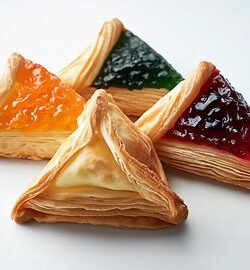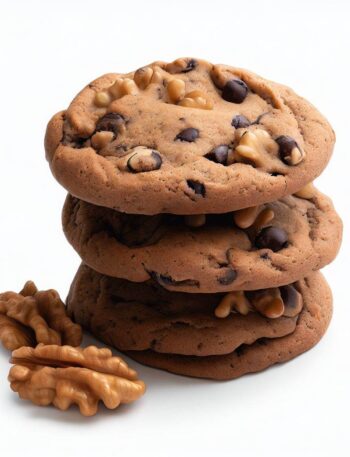Puff Pastry Recipe in the Air Fryer: Quick and Easy – A Perfectly Flaky Delight
Puff pastry is a versatile and indulgent dough that can be used to create a wide array of delicious treats. From savory appetizers to sweet pastries, its delicate layers and buttery texture make it a favorite among bakers and pastry enthusiasts. Now, imagine being able to achieve that perfect flakiness and golden crust without the need for a conventional oven.
In this article, we present a simple yet impressive recipe for the pastry in the air fryer that will leave you amazed by the results.
Ingredients:
- 1 sheet of frozen puff pastry, thawed
- All-purpose flour (for dusting)
- Egg wash (1 egg beaten with 1 tablespoon of water)
- Optional: sesame seeds, poppy seeds, or other toppings of your choice
Instructions:
1. Preheat the air fryer:
Begin by preheating your air fryer to 400°F (200°C). This will ensure the pastry bakes evenly and achieves that beautiful golden color.
2. Prepare the pastry dough:
Dust a clean surface lightly with flour to prevent the pastry from sticking. Place the thawed pastry dough sheet onto the floured surface.
3. Roll out the pastry dough:
Gently roll out the pastry dough into a rectangle, about 1/4 inch thick. Be careful not to press too hard, as you want to maintain the delicate layers of the pastry.
4. Cut into desired shapes:
Using a sharp knife or a pastry cutter, cut the rolled-out pastry dough into your desired shapes. Popular options include squares, rectangles, or triangles. Remember that pastry will rise and expand during baking, so leave enough room between the shapes.
5. Brush with egg wash:
Lightly beat an egg in a small bowl, and then add a tablespoon of water to create an egg wash. Using a pastry brush, gently brush the egg wash over the tops of the pastry shapes. This will give them a beautiful golden color once cooked.
6. Optional:
Add toppings: If desired, sprinkle sesame seeds, poppy seeds, or any other toppings of your choice over the egg-washed puff pastry shapes. This step adds an extra touch of flavor and visual appeal.
7. Air fry:
Place the prepared pastry shapes in a single layer in the air fryer basket, leaving some space between them. Depending on the size of your air fryer, you may need to cook them in batches. Bake for approximately 10-12 minutes, or until the pastry is puffed up and golden.
8. Cool and serve
Once cooked, carefully remove the puff pastry from the air fryer and let it cool on a wire rack for a few minutes. The pastry will continue to crisp up as it cools down. Serve them warm or at room temperature as a delectable snack or use them as a base for various appetizers and desserts.
Puff pastry has never been easier
Thanks to the convenience of modern kitchen appliances like the air fryer, achieving perfectly flaky puff pastry has never been easier. This simple recipe allows you to enjoy the buttery goodness of puff pastry without the need for a traditional oven.
Whether you’re planning a last-minute gathering or simply craving a delicious treat, this air fryer puff pastry will impress your family and friends with its irresistible texture and taste.
HISTORY
The History of Puff Pastry: Layers of Flaky Deliciousness
Puff pastry, with its delicate and flaky layers, has a rich history that can be traced back centuries. This versatile pastry, known for its buttery goodness, has become a staple in both sweet and savory culinary creations. Let’s journey through the history of puff pastry and uncover its origins and cultural significance.
Ancient Origins:
The origins of puff pastry can be traced back to ancient times, with early versions of layered dough appearing in various cultures. It is believed that the ancient Egyptians and Greeks were among the first to experiment with laminated dough, creating a precursor to what we know as puff pastry today.
The Development in Islamic Spain:
Puff pastry, as we know it today, owes much of its refinement and popularity to the skilled bakers of Islamic Spain during the Middle Ages. The techniques for creating layered dough were perfected and refined by Muslim bakers in Al-Andalus, a region that encompassed parts of present-day Spain and Portugal.
The Arab influence in Al-Andalus introduced techniques like folding layers of dough with butter or fat, resulting in a light and flaky pastry. These techniques were further refined and passed on to other regions of Europe during the period of Islamic rule in Spain.
The French Connection:
While the techniques for creating layered dough had been refined in Islamic Spain, it was in France that puff pastry truly became an art form. The French bakers of the 17th and 18th centuries developed the classic method of incorporating butter into the dough through a process known as “laminating.”
François Pierre La Varenne, a French chef and author, is often credited with popularizing puff pastry in France. His cookbook, “Le Cuisinier François,” published in 1651, included several recipes using puff pastry, establishing its place in French culinary tradition.
During the reign of King Louis XIV, puff pastry gained even more popularity. The royal court demanded extravagant and luxurious pastries, and French pastry chefs rose to the occasion, creating elaborate and artistic desserts featuring puff pastry.
Puff Pastry in Modern Times:
In the 19th century, with advancements in industrialization and the availability of ready-made pastry dough, puff pastry became more accessible to home cooks and professional bakers alike. Commercially-produced puff pastry dough made it easier to create flaky pastries without the time-consuming process of making the dough from scratch.
Today, puff pastry is used in a wide range of culinary creations, both sweet and savory. In French cuisine, classics like croissants, pain au chocolat, and vol-au-vents rely on the delicate layers of puff pastry. It is also commonly used in pies, tarts, turnovers, and various appetizers around the world.
Cultural Significance:
Puff pastry has become a symbol of indulgence, elegance, and culinary expertise. Its flaky layers, achieved through meticulous folding and rolling, create a textural contrast that elevates any dish it is used in.
In many cultures, pastry is associated with celebration and special occasions. From wedding cakes to holiday desserts, puff pastry delights have become synonymous with festivities and joyous moments.
Conclusion:
The history of pastry is a testament to the culinary ingenuity and creativity of bakers throughout the ages. From its ancient origins to the refined techniques of Islamic Spain and the French mastery of laminated dough, pastry has evolved into a beloved pastry that delights palates around the world. Its delicate layers and buttery richness continue to captivate and inspire both professional chefs and home cooks, ensuring that the legacy of puff pastry lives on for generations to come.

